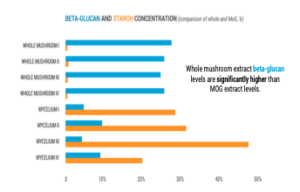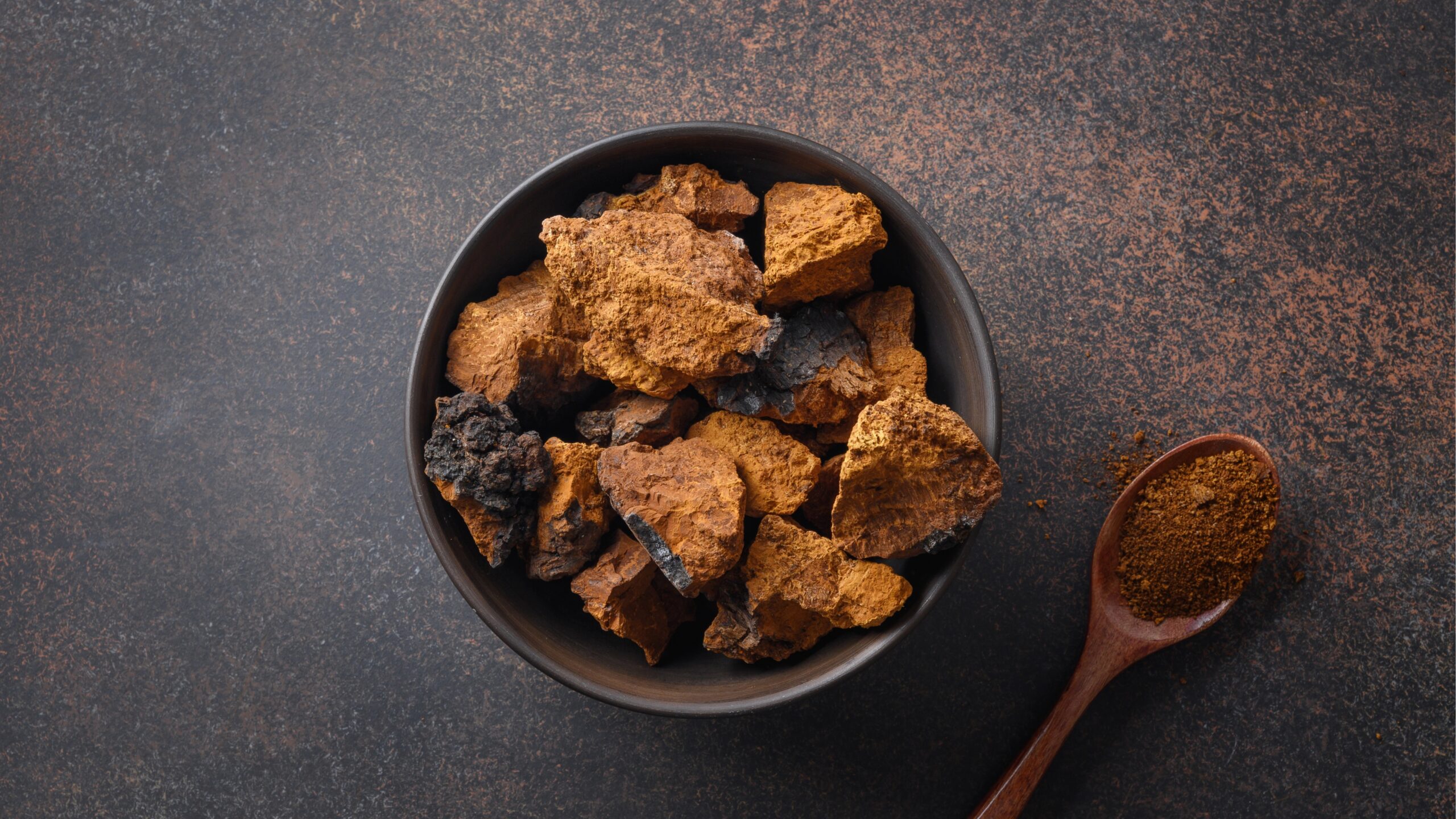History
The first mention of the use of Chaga comes from the 16th century, and its use in Russia. Chaga was used in a variety of ways, including general well-being, internal cleansing, and curing and preventing diseases in general.[i] While we can’t say that Chaga treats or prevents diseases, we can say that modern science has shown there are fantastic health benefits to this ancient mushroom.
What is Chaga?
Chaga is a fungus belonging to the genus Inonotus. In Latin, Inonotus means to penetrate, which reflects the reproductive nature of Chaga’s spores. After the spores find their way into a wound or crevice of a tree, the mushroom, like a parasite, begins to thrive. The battle between the tree and the mushroom sucks the life out of the tree and eventually, it will die.
Understanding what Chaga looks like and the harsh environment from which it naturally grows provides insight into why it is often referred to as “the king of the mushrooms.” Chaga is known as Black Mass, which accurately describes its appearance when grown in the wild. The exterior is hard, dark black, and roughly textured, while the inside is orange and cork in texture. Wild Chaga grows primarily near the arctic circle where the cold environment is thought to contribute to its health benefits. Chaga primarily “feeds” on birch trees but has been seen growing on other trees too.
The part of the Chaga which is harvested is called the mycelium. The mycelium contains the phytochemicals (naturally occurring plant compounds) and nutritional components linked to Chaga’s health benefits. The mycelium is the hard, cracked, black outside of the fungus found on the outside of the tree. Cutting Chaga is like cutting a wart off. If you don’t remove it all, it will grow back. The technique used to harvest Chaga is critical to the sustainability of Chaga mushrooms. The harvester must be sure not to go too deep to assure the mushroom will grow back. If this is done properly, harvesting can be repeated every 3-5 years or until the tree dies. Harvesting in this manner adds to the sustainability of wild-grown Chaga.
Why do you “feel good” when consuming Chaga? Generally speaking, Chaga has research showing its benefits in many areas of health, including immune support[ii], blood sugar[iii], inflammation[iv], cardiovascular[v], oxidative stress[vi] and radioprotective[vii]. Of the phytochemical compounds found in Chaga, each of these possess unique biochemical and physiological benefits to health. Two, in particular, betulin and betulinic acid, are unique to Chaga grown on birch trees due to those compounds being primarily found in birch trees.
What to look for in your Chaga product!
Wild-crafted not Cultivated
Wild-crafted plants grow wild, precisely as the name implies. Chaga grown in the wild is naturally subjected to environmental stressors such as variations in sunlight, extreme temperatures, availability of water, completing plants, insects, and disease. Growing wild forces Chaga to become more resilient and fully develop the nutrients and phytonutrients. Harvesting by hand also ensures the proper amounts of the mycelium are removed. This technique allows the tree to remain alive and for the mushroom to grow back. Harvesting in this manner means Chaga can be harvested again from the same spot in 3-5 years. Assuming the average tree will live up to 20 years once infected with Chaga, harvesting can be done multiple times in one location.
While discussing harvesting in the wild the topic of sustainability often comes up. Most people would think that since only a small percentage of trees (1 in 10,000) are infected with Chaga the supply of Chaga is limited in Finland. It is very sustainable due to the large volume of trees in Finish forests. This translates into only a small portion of the Chaga available in Finland is harvested to meet consumer demand. Wild1-crafted Chaga from Finland is harvested each year and it is collected by local forest stewards that care deeply about the health and sustainability of their forests.
Grown in the world’s largest certified organic forest
You want to look for Chaga grown in Finland, which has the world’s largest certified organic collection area, accounting for 30 percent of the world’s total organic collection area. 99% of the Finnish forests in the Arctic region are organic certified. Organic certification of wild, raw materials gives assurance of the origin, authenticity, traceability, and guarantees that biodiversity of the wild forest environment is maintained. To harvest in this region of Finland, businesses are required to prepare a detailed organic plan, register with the organic control authority, and continue compliance with the terms and conditions of organic production.[viii]
Your Chaga needs to be grown on birch trees
Birch trees are responsible for providing many of the bioactive components that make Chaga special. The cultivation of medicinal mushrooms has been on the rise over the past several years. Being able to grow mushrooms inside in a controlled environment offers several appealing benefits: the mushrooms grow quicker and cost less to produce. While cultivating most medicinal mushrooms inside sounds great, it isn’t the best method for Chaga. Chaga grown by cultivation rather than in the wild leads to reduced and notably different production of beneficial compounds.[ix][x] Cultivated Chaga has:
- Reduced number of phytosterols[xi]– Phytosterols are critical for the health benefits of Chaga
- Reduced beta-glucans (Image 1)- Beta-glucans are critical for the immune health benefits
- Significantly higher in starch (Image 1)- Starch provides little to no health benefits.
Image 1

Buyer beware:
Many Chaga supplements only list “Chaga mycelium” or “myceliated brown rice,” which means it wasn’t sourced from wild Chaga growing on Birch trees and does not have the same medicinal profile as true Chaga.
It is quite evident, Chaga is an amazing natural ingredient. Using Chaga as a stand-alone ingredient or with different complementary ingredients positions that product at the top of their category. The story behind the organic forest, wild-crafted/harvested, clinical effects, 100% unbroken traceability (from the forest to the product), and unparalleled quality are all that make Chaga grown in the wild Great! There are only Chaga ingredients that meet the standards I look for so be sure to look for one of these two brands; Sibelius: MyceliAid and FenoChaga®. Be sure to look for these brands if you want the best that Chaga has to offer your health.
References
[i] Oriveda Website, Chaga the Facts, https://oriveda.wordpress.com/Chaga-the-facts/#h-3 Last revision: July 5th, 2016, accessed March 4, 2020
[ii] Kim YO, Han SB, Lee HW, et al. Immuno-stimulating effect of the endo-polysaccharide produced by submerged culture of Inonotus obliquus. Life Sci 2005;77(19):2438-56
[iii] Sun JE, Ao ZH, Lu ZM, et al. Antihyperglycemic and anti-lipid peroxidative effects of dry matter of culture broth of Inonotus obliquus in submerged culture on normal and alloxan-diabetes mice. J Ethnopharmacol 2008;118(1):7-13
[iv] Park YM, Won JH, Kim YH, et al. In vivo and in vitro anti-inflammatory and anti-nociceptive effects of the methanol extract of Inonotus obliquus. J Ethnopharmacol 2005;101(1-3):120-8.
[v] Hyun KW, Jeong SC, Lee DH, et al. Isolation and characterization of a novel platelet aggregation inhibitory peptide from the medicinal mushroom, Inonotus obliquus. Peptides 2006;27(6):1173-8
[vi] Lee IK, Kim YS, Jang YW, et al. New antioxidant polyphenols from the medicinal mushroom Inonotus obliquus. Bioorg Med Chem Lett 2007;17(24):6678-81
[vii] Rasina LN. [Effect of cryosubstance Chagi on deposition or isolation of 90Sr and on the effect of prolonged external exposure to gamma-radiation]. Radiats Biol Radioecol 2002;42(4):399-403.
[viii] Luke website, https://www.luke.fi/ruokafakta/en/vegetables-fruits-and-berries/organic-collection-area/ , Organic collection area., Accessed March 7, 2020.
[ix] Zheng, W. F.; Liu, T.; Xiang, X. Y.; Gu, Q. (July 2007). “Sterol composition in field-grown and cultured mycelia of Inonotus obliquus.” Yao Xue Xue Bao = Acta Pharmaceutica Sinica. 42 (7): 750–756
[x] Zheng W, Miao K, Liu Y, Zhao Y, Zhang M, Pan S, et al. (2010). “Chemical diversity of biologically active metabolites in the sclerotia of Inonotus obliquus and submerged culture strategies for up-regulating their production.” Applied Microbiology and Biotechnology. 87 (4): 1237–54
[xi] Zheng, W. F.; Liu, T.; Xiang, X. Y.; Gu, Q. (July 2007). “Sterol composition in field-grown and cultured mycelia of Inonotus obliquus.” Yao Xue Xue Bao = Acta Pharmaceutica Sinica. 42 (7): 750–756

